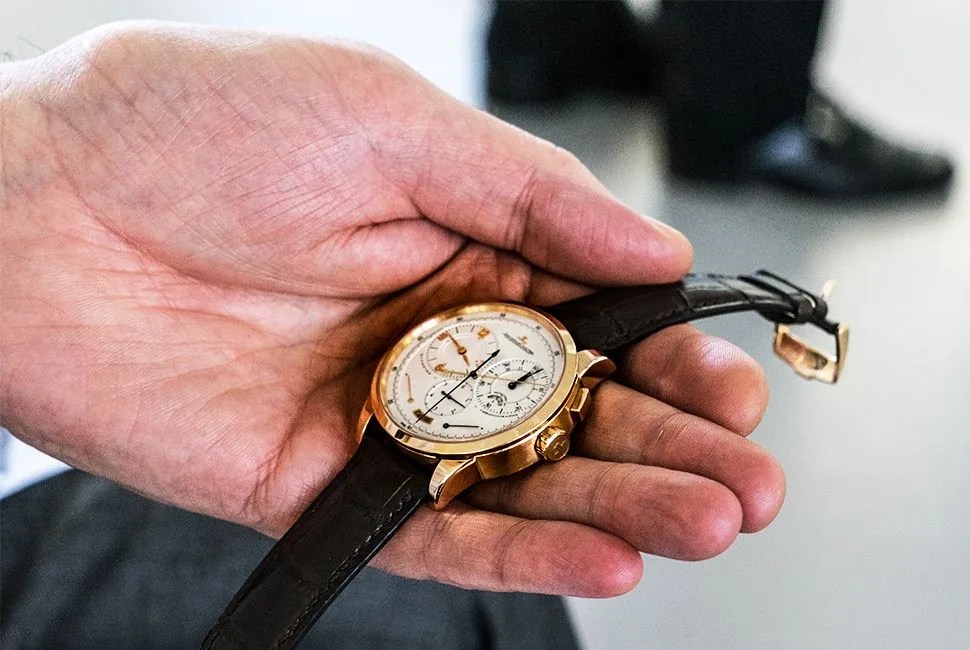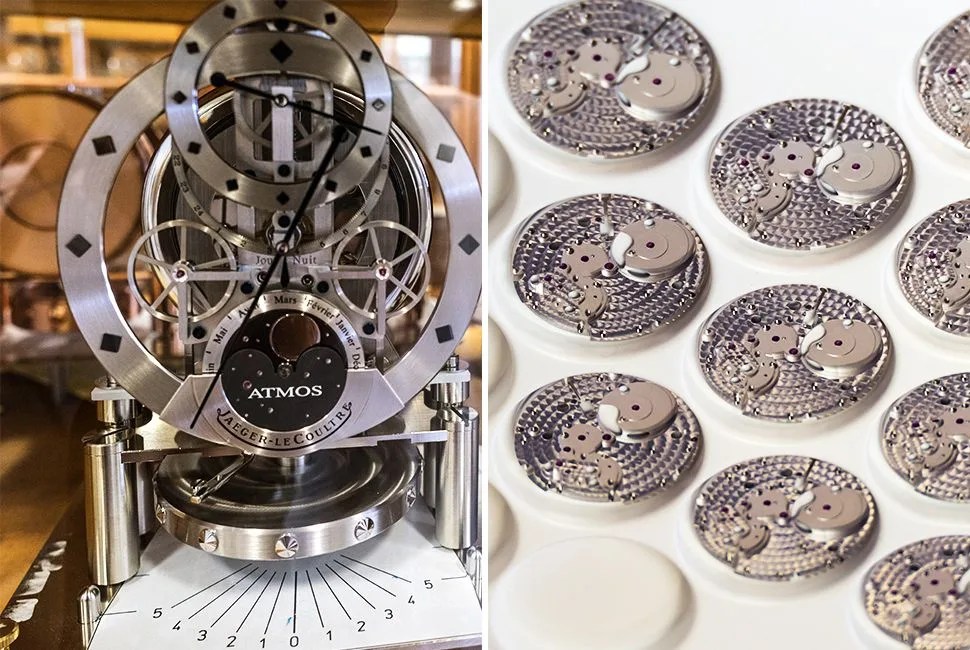4 photos
In the 1800s, the Vallée de Joux in Switzerland was a day’s journey from the big city of Geneva in the best weather, and isolated for months when the mountain snows came. Farmers idle in the winter turned to watchmaking — a skill passed over the border from France — cutting and grinding tiny gears by the waning light through big south-facing windows, completing a watch or two by spring. Soon the valley had a reputation for producing some of the finest watches in the world, brought down each spring to sell in Geneva. One of those who wintered in the valley, Antoine LeCoultre, hung a watchmaking shingle outside of his farmhouse in 1833. Today that farmhouse still stands, surrounded by the modern wings and annexes of a watchmaking powerhouse: Jaeger-LeCoultre.
The Le Sentier-based maison has, in the spirit of its founder, adopted and invented new state-of-the-art means of watchmaking, resulting in a mix of handcraft and automation. LeCoultre himself invented one of the first watches that could be wound without a key, as well as a means to measure microns (a major breakthrough in the industry) in the 1800s; throughout the 20th century, JLC’s prestige and prowess grew. They produced over 1,200 different calibres and over 400 patented inventions. Beyond making movements for its own watches, Jaeger-LeCoultre also created movements for some of Switzerland’s most prestigious marques, such as the calibre 920 used by no less a triumvirate than Patek Philippe, Vacheron Constantin and Audemars Piguet. And in the 1980s and ’90s, JLC lent several movements to the International Watch Company of Schaffhausen as well.
So, to get a glimpse inside the storied walls of the Manufacture Jaeger-LeCoultre is, in some ways, to look into the spiritual heart of Swiss watchmaking. If the words “Swiss Made” on a watch dial stand for excellence, then the name “Jaeger-LeCoultre” holds the same position of reverence within the industry, at the top of the pyramid, the watchmaker’s watchmaker.

Jaeger-LeCoultre’s watches cover the spectrum of durable tool watches, from its Master Compressor series — which includes a 1,000-meter dive watch — to the pinnacle of high watchmaking, the Duomètre series, whose two powertrains drive timekeeping and complications independently. All of these watches are built in the same factory that houses a little more than 500 workers — some by more automated means, and others by skilled watchmakers who will see a watch through from baseplate to crystal, all by hand. In a system that is as old as the manufacture itself, watchmakers work their way up to the highest levels of proficiency, from apprentice to master, over many years of training and mentoring.
The manufacture is a clean, brilliantly white space, lit by big windows where snow-reflected light pours in. The environment is a mix of the old and new — high-tech laser-cutting machines next to wooden hand tools. It is a quiet, studious place, where the clink of tools is the only sound above the white noise of clean room blowers, ventilators and robotic machinery.







